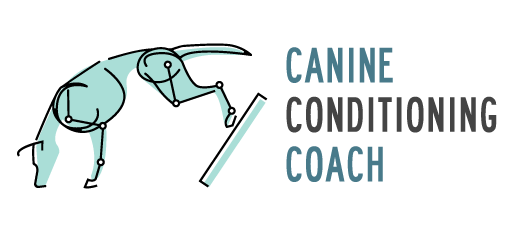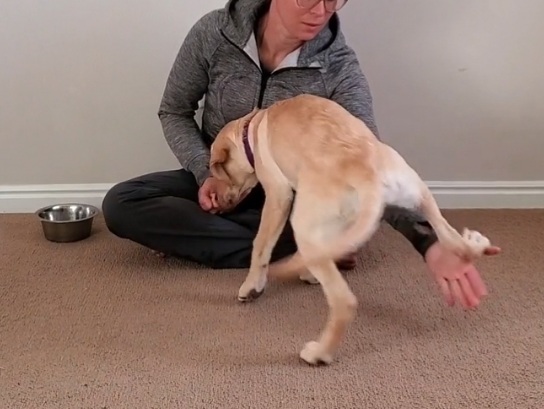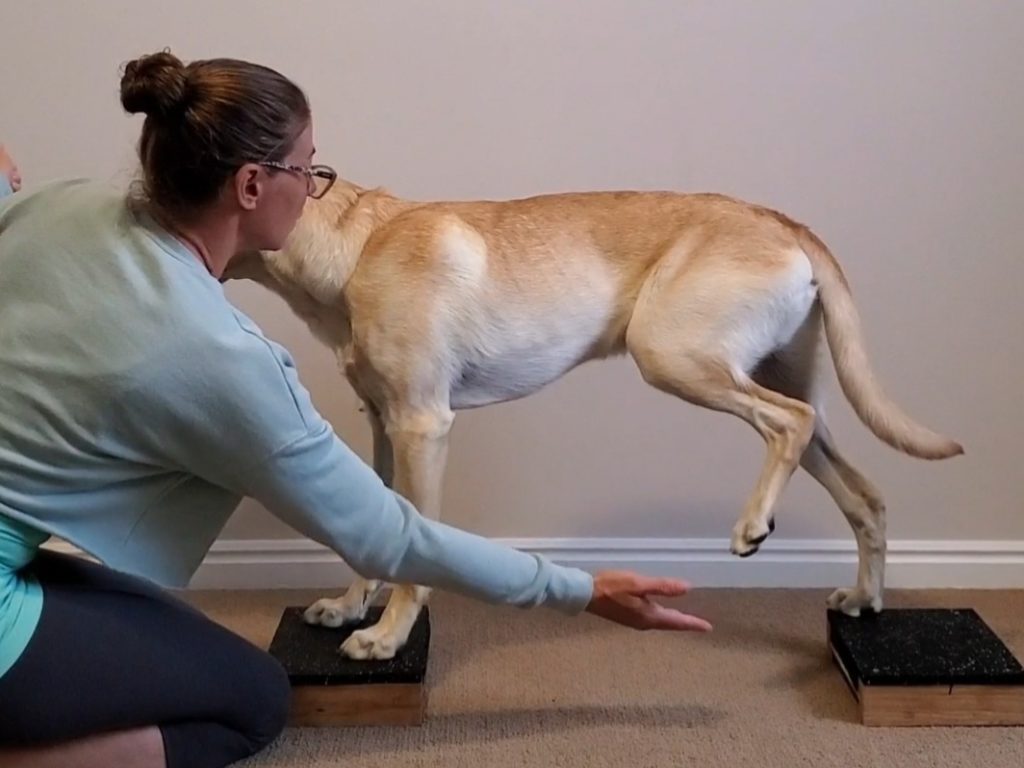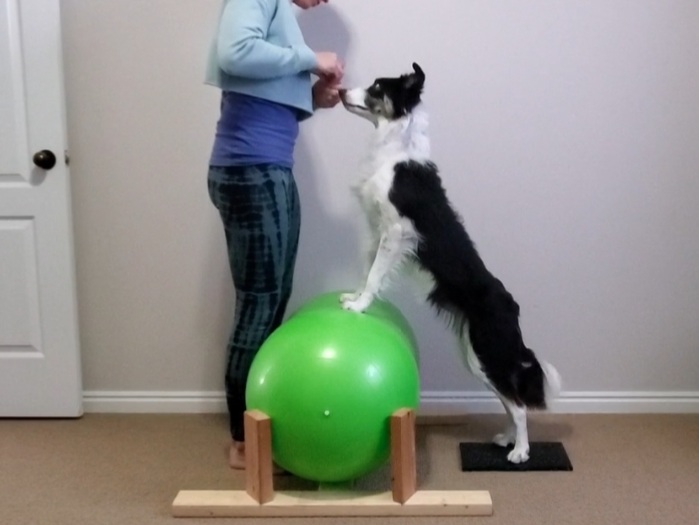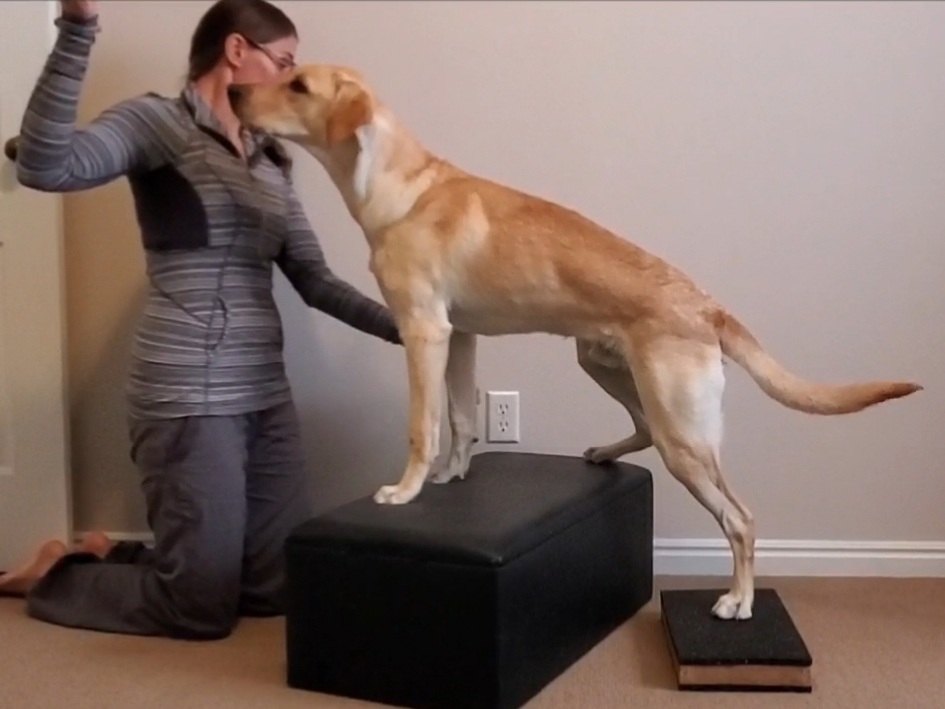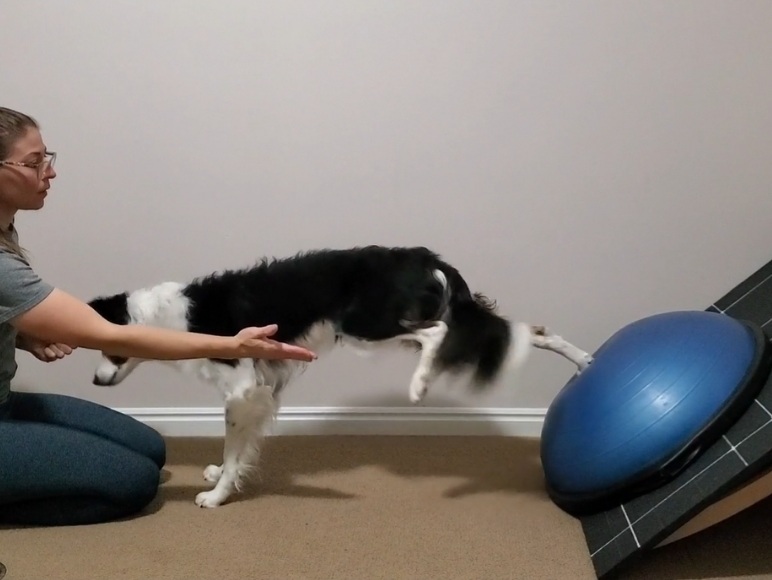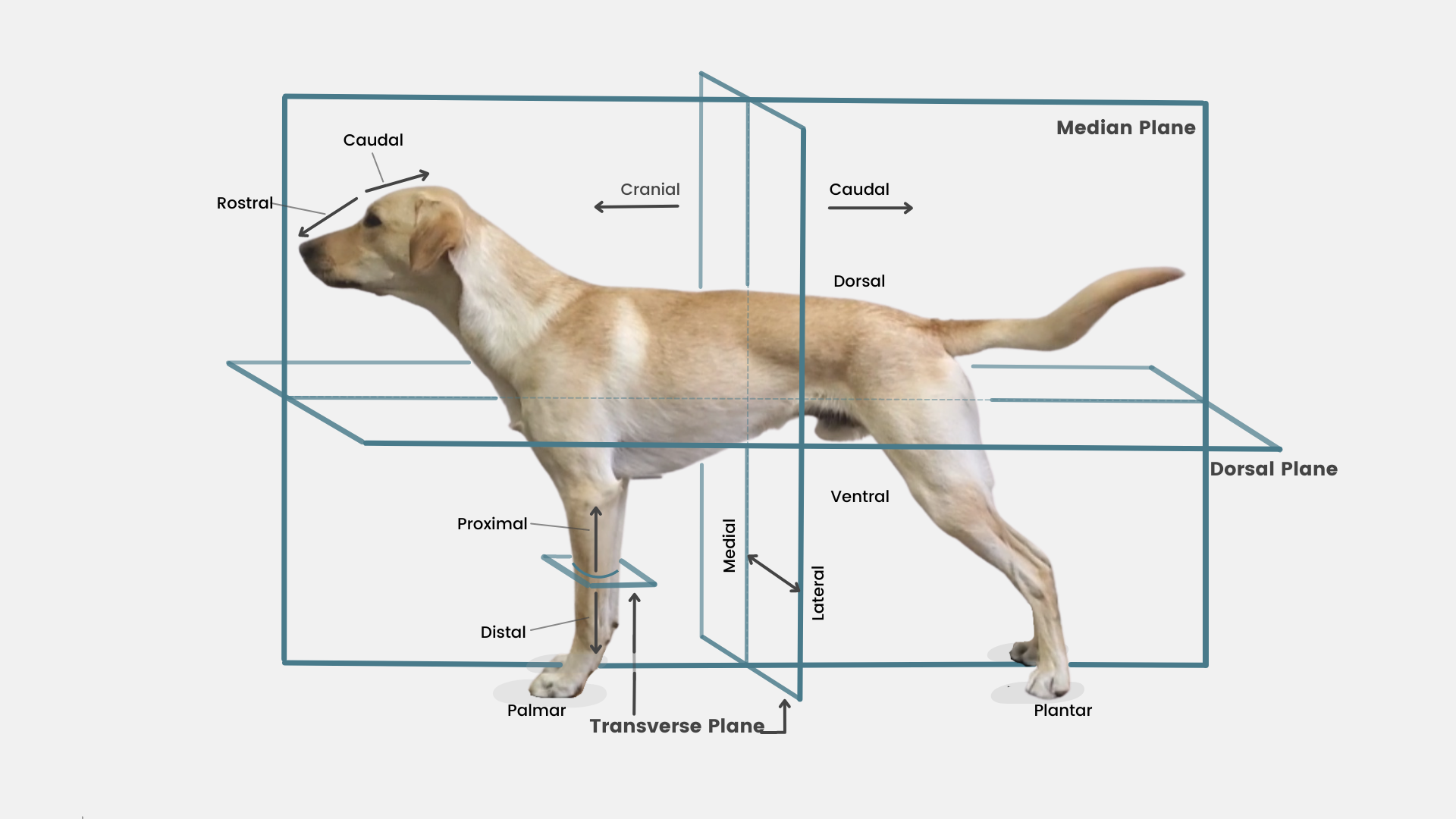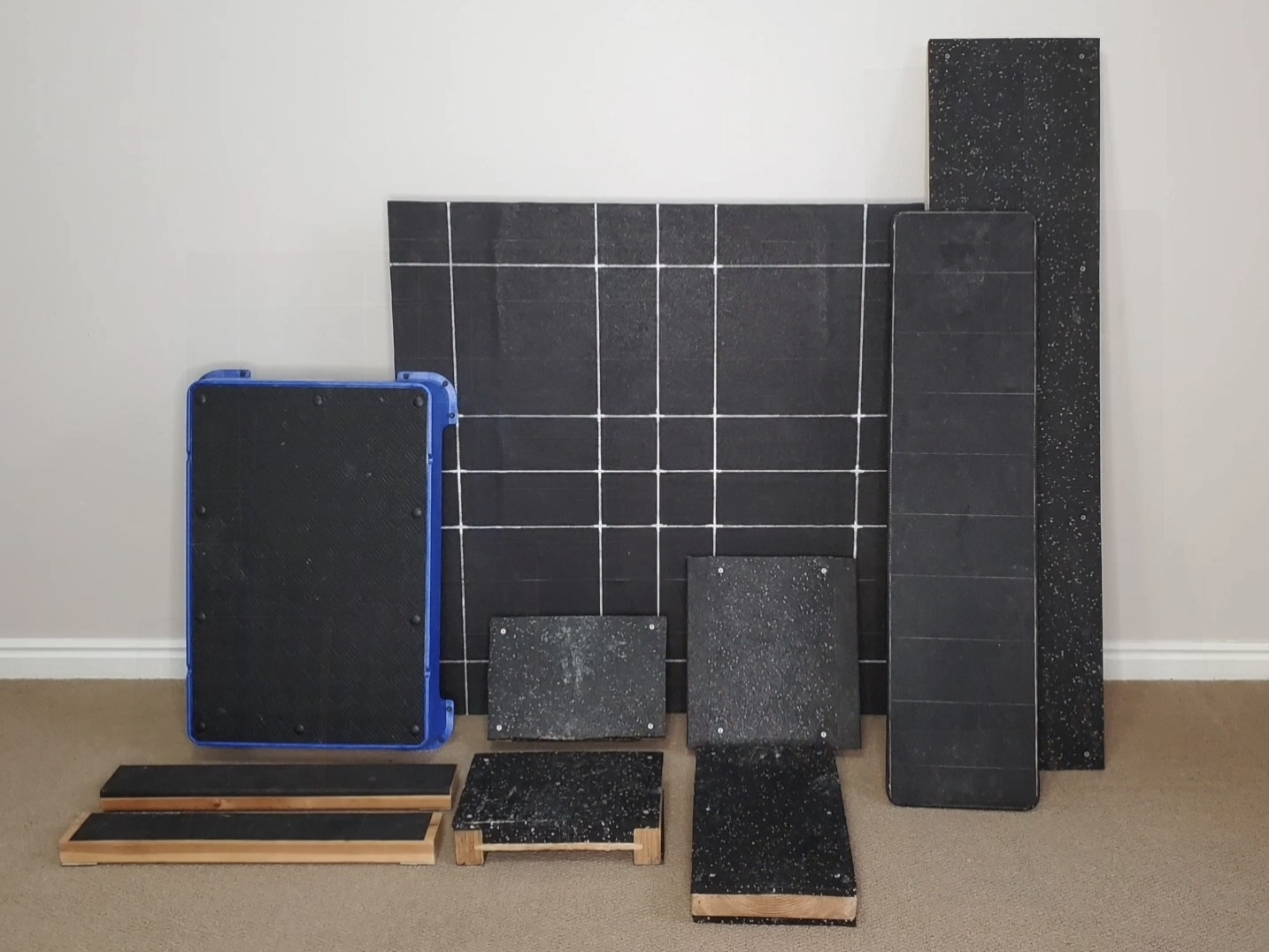Purpose: The Rear Foot to Hand Target is an important movement when learning body awareness, but also in conditioning when looking to increase load on one pelvic limb, challenge balance, or increase work through the core. In this variation, we are using a raised Standing Platform to eliminate the side stepping component of the movement we started with initially. The spine / top line alignment will be addressed in the progression variation.
Targets: While the movement is being executed through the targeting limb or free limb, the work itself is actually being done by the standing limb or grounded limb, and targets the grounded leg pelvis, hip and stifle stabilizers, as well as the iliopsoas and abdominals bilaterally.
Equipment: Raised Standing Platform
NOTE: This graphic highlights the marker timing and reward delivery I have found produces the best results. We want to build value to a solid rear foot to hand target, but ALSO the rear foot returning back down onto the platform. Duration and refining of the spine alignment will come in later progressions.
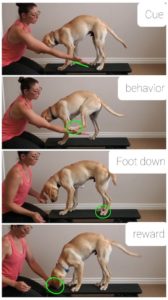
Watchpoints:
- Up until now, the main focus of this exercise has been teaching the dog to lift a rear foot and target it to the available surface… by any means necessary… Which included some side-steping. In the Rear Foot to Hand Target (Part 1): Foundation version of this exercise, the foot target was to my leg. In the Rear Foot to Hand Target (Part 2): Beginner version the target was to my hand. Now, we’re adding in awareness of the standing leg into the equation.
- I’m using a narrow raised platform (standing platform) to limit the lateral distance available for Ron Burgundy’s rear feet. This will limit the side-steping, and allow him to learn to keep his pelvis more level, and reach forward (vs out to the side) for the hand target.
- Once he learns (mentally and physically) how execute the movement pattern without side-steping, I switch the equipment set up (platform + balance bar), to clean up the alignment of his top line, and finalize the exercise.
- As is typical, he’s better on one leg than the other (he’s very EXUBERANT with his right leg, which is creating some alignment issues), which should change with more experience.
- Rewarding on the platform or from a low hand position allows the pup to shift weight into the forehand, intentionally making the leg lifting component easier. In the progression variation of this exercise, placement of reward will be raised, and spine alignment will be included in the criteria.
- If your pup is struggling with this variation, working on the prerequisite exercises will likely help develop the physical and mental requirements needed for success.
